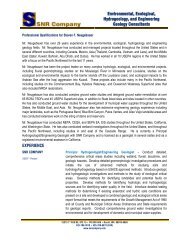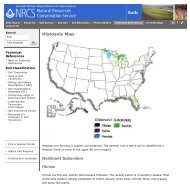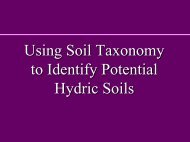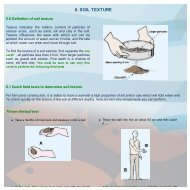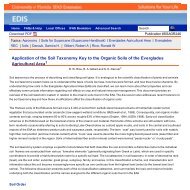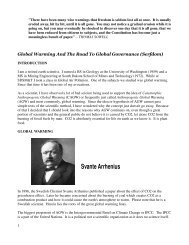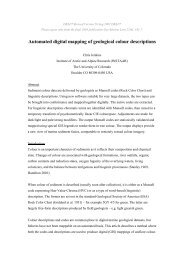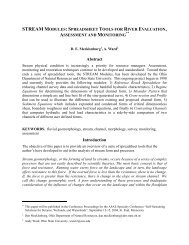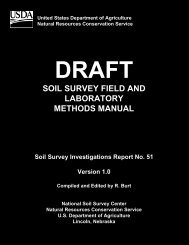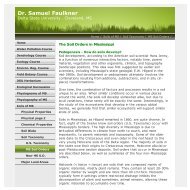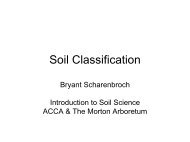chapter 3 fundamentals of fluvial geomorphology and stream ...
chapter 3 fundamentals of fluvial geomorphology and stream ...
chapter 3 fundamentals of fluvial geomorphology and stream ...
You also want an ePaper? Increase the reach of your titles
YUMPU automatically turns print PDFs into web optimized ePapers that Google loves.
charged with the design <strong>of</strong> river projects either fail to fullyappreciate the importance <strong>of</strong> geomorphic assessments, or lack theeducation or training background to perform them adequately.Geomorphic assessment is an essential part <strong>of</strong> the designprocess for schemes ranging from local bank protection, throughreach-scale habitat enhancement, to master planning for waterresource management in an entire watershed. The aims <strong>of</strong>geomorphic assessment are to provide the baseline informationnecessary to characterize process-form interactions in the river,identify control points <strong>and</strong> problem reaches, <strong>and</strong> support division <strong>of</strong>the system into geomorphically distinct sub-reaches that may beindividually classified with respect to morphology. Once thesystem has been characterized <strong>and</strong> classified, the engineer mayassess the stability status on a reach-by-reach basis <strong>and</strong> predictthe medium <strong>and</strong> long-term autonomous evolution under a donothing scenario. This provides a base line against which toassess the morphological responses <strong>of</strong> the project reach <strong>and</strong> widersystem to the proposed engineering, rehabilitation, or waterresources project.Perhaps the most important step in any geomorphicassessment is ensuring that the scope <strong>and</strong> content match theproject goals, authority, <strong>stream</strong> <strong>and</strong> watershed characteristics, <strong>and</strong>available resources. There is no st<strong>and</strong>ardized or cookbookapproach, but over the last two decades a number <strong>of</strong> assessmentschemes have been developed <strong>and</strong> these provide valuableguidance based on direct experience (Schumm et al. 1984;Richardson <strong>and</strong> Huber 1991; Schall <strong>and</strong> Lagasse 1991; Shirole<strong>and</strong> Holt 1991; Biedenharn et al. 2000b; Robinson <strong>and</strong> Thompson1993). Typically, existing geomorphic assessment techniques maybe sub-divided into procedural steps dealing with:• assembly <strong>of</strong> existing <strong>and</strong> archived data/information in adesk study;• establishment <strong>of</strong> current channel forms <strong>and</strong> sedimentfeatures through <strong>stream</strong> reconnaissance <strong>and</strong> fieldsurveys;• geomorphic analysis <strong>and</strong> interpretation <strong>of</strong> historical <strong>and</strong>contemporary information;• <strong>stream</strong> classification <strong>and</strong> assessment <strong>of</strong> stability status atreach scale;• prediction <strong>of</strong> past <strong>and</strong> future morphological evolution <strong>and</strong>response to proposed project; <strong>and</strong>Fundamentals <strong>of</strong> Fluvial Geomorphology <strong>and</strong> Stream Processes 65



